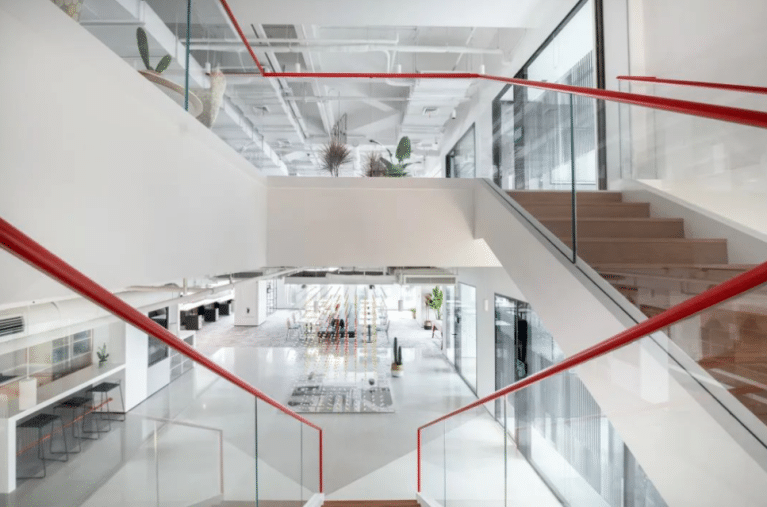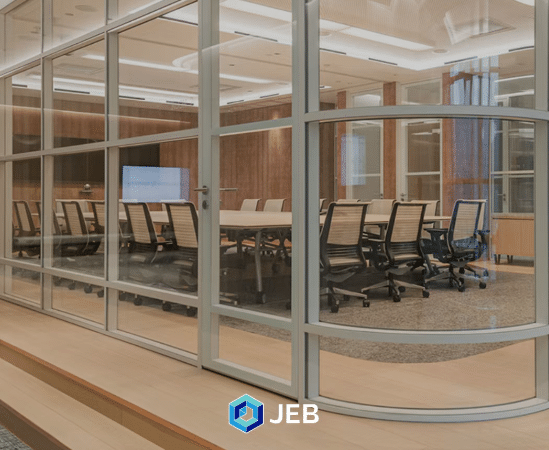杰柏集团专注开放式办公室隔音方案,推出STACKADE隔音门,采用层叠面板设计,兼容多样风格,有效隔绝噪音。灵活隔断提升空间利用率,经济便捷,量身定制解决方案,打造舒适高效办公环境,满足开放式办公场景的隔音需求。
作为办公家具十大品牌,杰柏以匠心与可持续理念,提供全场景卓越空间解决方案。我们注重创意功能、健康呵护与团队协作,精选环保材料,为客户打造高效、健康、凝聚的工作生活空间,共塑绿色未来,引领办公家具行业新风尚。
JEB杰柏针对航空业办公空间需求,以创新防火隔音门及隔断系统提供解决方案。采用A类1小时防火双层玻璃隔断保障安全,X-series双层玻璃门有效隔绝噪音,金属质感框架与通透设计融合现代美学,技术赋能灵活适配未来需求,从安全、静音、美学到技术赋能全方位重塑办公空间,满足航空业严苛标准,成为理想之选。
杰柏会议室玻璃隔墙以卓越隔音性能与灵活组合设计,重新定义现代办公空间美学。在中国手游头部企业上海办公室项目中,JEB采用X-Series双层弧形玻璃隔断,实现功能分区独立性与空间流动性平衡,阳极氧化黑色工艺更赋予高级质感,成为功能与美学兼具的理想选择。
杰柏办公室玻璃隔断以A级防火隔热玻璃为核心,通过高强度钢结构支撑体系,打造集1-2小时耐火防护、创新消音技术与空间美学于一体的办公解决方案。产品突破传统隔音局限,为会议室等私密空间营造静谧环境,同时遵循国家标准满足多样化防火需求。
上海办公室玻璃隔断领域,JEB杰柏隔断以玻璃工艺为核心,融合艺术性、仪式感与品质感,打造高效功能分区与流动美学韵律。其极简设计减少框架存在,通透玻璃成为视觉主角,光影交织如艺术画廊。模块化设计支持灵活改造,兼顾声学性能与可持续空间生态,重新定义办公空间价值维度。
上海,这片汇聚全球资本与智慧的金融热土,正见证着一场场空间美学与功能革新的碰撞。在对律师事务所办公室进行改造时,JEB杰柏作为行业领先的玻璃隔断定制厂家,以创新设计与卓越工艺,重塑办公空间新范式,精准平衡隐私保护与协作效率,引领法律行业办公场景的迭代升级。
杰柏隔音声学设计方案,聚焦办公声环境优化,通过专业声学隔断系统与X-SERIES系列,高效阻隔高频低频噪音,融合美观设计与全周期服务,打造静谧舒适办公空间,驱动员工专注力提升,赋能高效工作新升级,开启办公声学舒适新时代。
在现代办公环境不断演进的背景下,办公空间的设计与布局正经历着深刻变革。开放式办公理念的普及,使空间的通透性和互动性成为关键考量;与此同时,随着《建筑防火设计规范》的持续升级,对办公建筑的防火分区和耐火极限要求愈发严格。在此双重趋势下,高性能办公室玻璃隔断成为现代办公空间的理想选择,不仅为企业构建安全堡垒,更助力塑造高效、舒适且富有创意的工作环境。
JEB Group has partnered with Michael Young Studio to present the Cabin, a multi-functional and soundproof space designed to promote wellness in the workplace. With switchable glass panels, the Cabins are perfect for meetings, phone calls, or casual conversations. Interiors include indirect LED lighting and air circulation with an “Airgle” air purifier, promoting a sense of wellbeing. Eco-friendly materials are used, such as recycled PET bottles for the exterior and formaldehyde-free, 100% recycled eco board for the tables.
The millennial generation has been transforming the work environment and the way goals are being achieved. Millennials value their purpose in their work and the methods to bring out creativity and ideas. They enjoy working in a collaborative culture and are not afraid to share their thoughts and values. Advancements in technology have allowed them to work remotely in the same manners as they do in the office.
Gen-Z, born after 1996, will soon make up one-third of the world’s population and prioritize positive work culture, work-life balance, and frequent feedback. Employers can establish a positive work culture with trust, social connection, and wellness. Offering flexible work arrangements and remote working options helps maintain work-life balance. Gen-Z workers desire frequent feedback and organizations must recognize their new set of expectations and acknowledge technology’s role in their connection with companies.

















